Latest News
Kitchen Chat and more…
Kitchen Chat and more…
Whiskygeeks was invited to a Penderyn whisky dinner at Queen and Mangosteen!
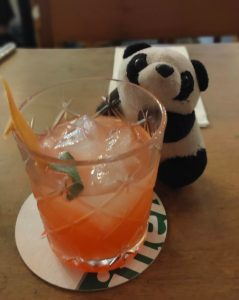
The whisky dinner started with a refreshing cranberry cocktail. The tartness works with the sweetness from the Penderyn Legend, and that creates a balanced and refreshing cocktail. Served together with the cocktail were Haggis Scotch eggs. For those who haven’t tried Scotch eggs, they are eggs coated with meat, breaded and deep-fried. In this dish, the meat used was Haggis.
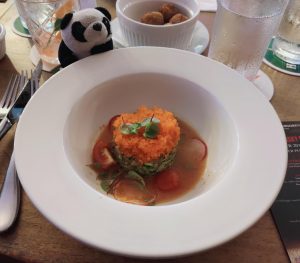
In the dish was a beautiful combination of tuna sashimi and creamy avocado, topped with shrimp roe. The base was laden with umami flavours from a miso-based sauce and tomatoes. The seafood flavour from the tuna and roe compliments the umami miso paste. This savoury starter enhances the light and sweet character of the Penderyn Madeira.
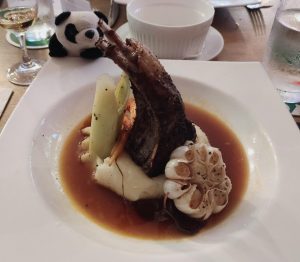
The lamb dish looked exquisite, very much like the towers of KL. This lamb was also unlike any lamb I have tried before.
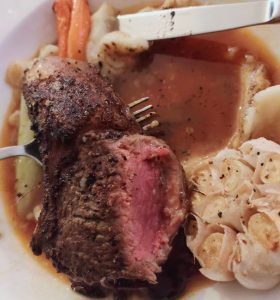
The cross-section of the lamb not only looked like steak, but it tastes like steak as well. Even a Welsh gentleman sitting adjacent who disliked lamb loved the dish. The garlic enhanced the lamb rack as well, while the mashed potato brought some balance to the main course. The Penderyn Sherrywood had the body and flavour to compliment this beautiful full-flavoured dish!
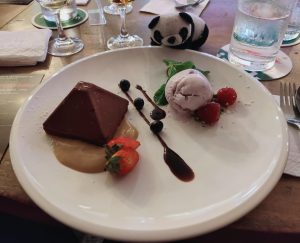
The plating of the dessert was beautiful, showcasing a variety of colours, flavours and textures. This was a dessert that could indeed follow up the extraordinary main course! When my spoon carved into the pyramid-shaped praline, the spoonful took the right amount of caramel sauce with it and complimented the hazelnut cream and chocolate! The fresh fruit and yoghurt ice cream gave the acidity to refresh the palate before going for more chocolate!
With such a variety of sweet treats, the Penderyn Portwood, with its flavours of guava and bananas, pairs well to this fantastic dessert!
The dinner at Queen and Mangosteen was truly amazing, and made even better with Penderyn whisky! Many thanks to Spirits Castle for the invite!
Whiskygeeks sat down for an extraordinary tasting with Yash, the brand ambassador for Paul John whisky! He’s a geek himself, graduating from the Harriet Watts brewing and distilling masters course, and I have learnt a lot!
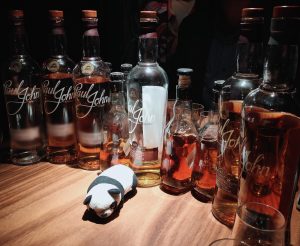
One of the unique things about Paul John is their use of 6-row barley for their core range whisky production. However, this is not bere barley from Orkney; this 6-row barley originated from the Himalayas and grows in India today. In contrast, most whisky producers use 2-row barley like Concerto or Optic strains. In Scotch, the most common 6-row barley used is Bere Barley that originates from Orkney.
While the 2-row barley has more sugar but fewer proteins and fats, it is the reverse for 6-row barley. As we would need sugar to ferment to alcohol, this means that the alcohol yield for 6-row barley is lower than 2-row barley. However, for 6-row barley, the higher content of barley fats and protein results in more flavour and complexity in its spirit character.
The Peat
Paul John produces peated and unpeated whisky and brings in 2 kinds of Scottish peat. The barley is peated using Islay peat and Mainland peat to approximately 20-25ppm and 30-35ppm respectively. The Paul John Bold uses Islay peat while the Paul John Edited uses mainland peat. These two bottles make an interesting comparison between peat from 2 different regions as the whisky comes from the same pot stills.
The fermentation process is approximately 70 hours in total, using a unique strain of yeast that performs well in Goa’s hot climate. The wash undergoes a 60-hour primary fermentation and sits in the washback for an additional 10 hours to develop flavour. During the warmer seasons, the fermentation is slightly faster, and during the colder seasons, more time is given for fermentation.
The copper pot stills in Paul John distillery is not from Forsyths, but they were made locally in India! The still features an ascending lyne arm, which causes more reflux, allowing for a sweeter lightly distillate.
The angel’s share in Goa is 8% per annum, which means that whisky ageing in Goa will lose 22% of its original volume in 3 years. However, as whisky matures faster in a warm climate, a 3-year-old whisky in India would taste like a 12 to 15-year-old Scotch!
For the past few years, Paul John has released mostly American white oak matured whisky primarily due to the law in India with importing casks. There is a new upcoming bottle that I cannot talk about at the time of writing this article, but let me say this – Christmas is coming early for sherried whisky drinkers! 😛
Paul John’s main ageing facility is on the ground level with ventilation from the wind. The distillery also has an underground cellar with a slightly lower angel’s share. Yash told us that it’s a challenge to stay in the underground cellar as the alcohol vapours are thick and intoxicating!
Challenge accepted!
Editor’s Note: This is the second guest post completed by Eddie, who is our newest correspondent on the other side of the world. WhiskyGeeks is going global, indeed!
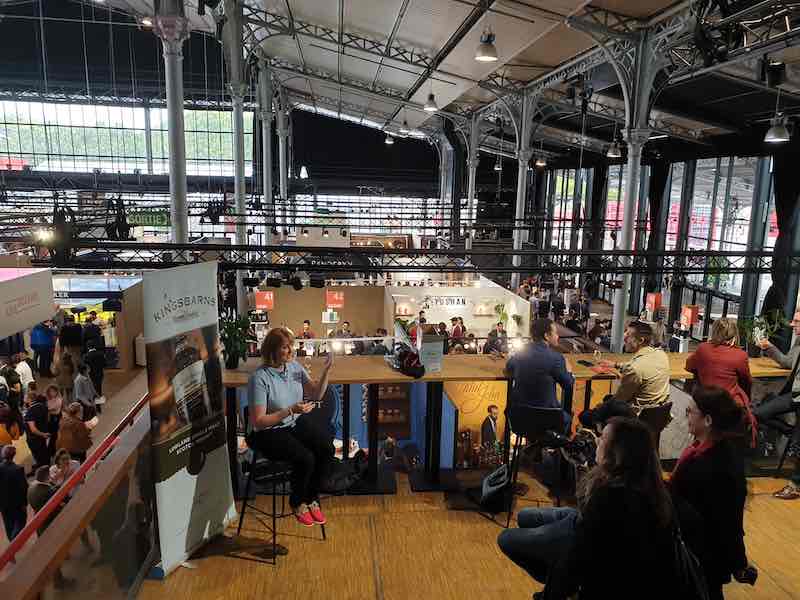
Written by: Eddie
Whisky Live Paris scheduled a day, especially for the trade personnel to network over whiskies. It is an excellent opportunity for trade people to mingle with the brand advocates and understand the brands more. This year, it happened one day after the actual Whisky Live weekend.
Whisky Live Paris 2019 reserved the longest day for professionals in the industry. There was open access to the VIP section and all areas of the exhibition. Masterclasses were also jam-packed throughout the day. Having visited most of the whisky stands on the main exhibition floor on Sunday, we headed for the VIP section straightaway. We were floored by the selection of whiskies from various independent bottlers, including but not limited to LMDW artist series, Spirit Shop Selection, Hidden Spirits and Sansibar.
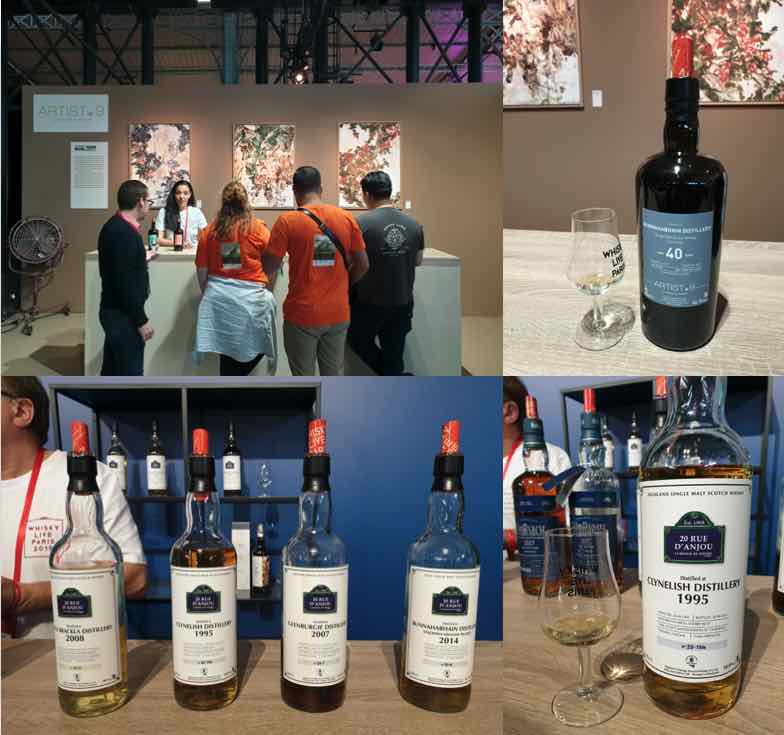
From Left to Right (Clockwise) – LMDW Booth, Artist Bunnahabhain 40 YO, LMDW 20 Rue D’Anjou Range, Clynelish 1995 by LMDW
The selection available was mind-boggling. We started our day with a Bunnahabhain 40 Years Old from LMDW Artist Range and from there, we moved on to the rest of the Artist Range. We also had the good fortune to taste the various LMDW 20 Rue D’Anjou bottles. A special mention must go to the Clynelish 1995 as it was excellent with full-on waxiness and well-balanced sherry influence from the refill cask.
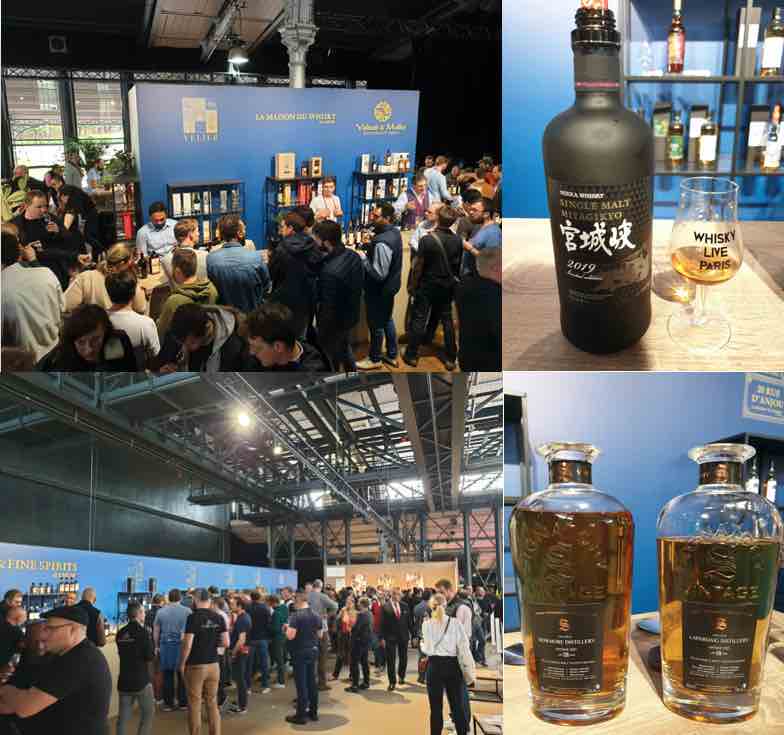
We soon found ourselves at the Asian whiskies section. The booth was swarming with eager whisky enthusiasts who were like kids in a candy store, except that they were all grown men. Most of them, including us, were waiting to try the various Chichibu and Kavalan expressions. However, the Yoichi and Miyagikyo 2019 Single Casks were the stars of the show. Besides their rarity, the price tag of 2750 euros made them the “must-try”.
We managed to taste the two rare bottles as we were right there when the bartender brought out the bottles. That moment became chaotic almost immediately, as everyone jostled their glasses through to get a sample. Bottled for the 50th anniversary of Miyagikyo Distillery, many whisky lovers around the world criticised the two bottles for their massive price tags. As Non-Age Statement (NAS) whiskies, people do have a view that these whiskies must be cheaper. Nonetheless, both whiskies made it to our top picks (see below). The Miyagikyo was woody with a right balance of dark fruit flavours and a hint of muskiness while the Yoichi had a buttery sweetness with lingering soft peat.
Besides the various Asian whisky, we discovered other gems in the VIP section. The 18-year-old Laphroaig bottled by Signatory Vintage for LMDW was surprising as the medicinal character of Laphroaig was not the first thing that surfaced. Instead, the Laphroaig was salty, gentle and subtle, with the leather notes kicking in only towards the end. It remained me of a much older Laphroaig in general, which was interesting. Meanwhile, the Caroni and Hampden bottles at the Velier booth were also extremely popular.
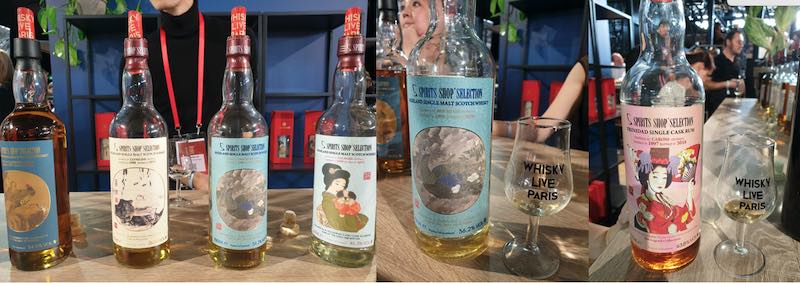
Spirit Shop Selection is an independent bottler from Taiwan. They work closely with LMDW and move many of their bottles through Paris. There is a huge following in France for their bottles. At the booth, we learnt that they typically chose casks suited to the Taiwanese palate. It explained why most of their casks leaned towards the sweeter side – Taiwanese tend to have a sweet tooth!
There was an incredibly sweet and pleasant Caroni 21 1997 available for sampling which did not have that bitterness in the finish. The Ben Nevis 22 years was excellent as well with the funky distillery character at the forefront. There was a Karuizawa under the table as well, but few have gotten the opportunity even to see the bottle, let alone taste it. We, of course, did not get to try it.
After trying out Taiwanese independent bottles, we move on to Hidden Spirits, an Italian independent bottler.

To our knowledge, Hidden Spirits was the only independent bottler who brought out a Mortlach for tasting, and it was a cracker. This 17-year old whisky sits a full term in a first-fill bourbon cask. It was then finished for three months in a sherry cask which contained a peated Ben Nevis. Chock-full of leather, sulphur, funk and mild peat, in our opinion, this was such an underrated bottle given the hype around other bottles.
It was a pity that we couldn’t try every whisky offered at the VIP section. Nonetheless, we went through at least 90% of them. Every booth had unique offerings, and the VIP ticket is worth the extra 60-65 euros! We will highly recommend you to get it if you plan on going next year.

Information on Mars Distillery
We were lucky to get seats at the Mars masterclass led by the Distillery Director Hajime Kunai. The class was a showcase of three single casks (ages 3-4 years old) matured in different regions in Japan, each with different climates. The locations were Shinshu, Tsunuki and Yakushima.
The differences demonstrated the effect that the maturation environment had on almost identical whiskies. The Yakushima maturation is a peated expression at 20ppm and stood out as you could tell the difference of an island-style maturation practically immediately. It closely resembled the style of Highland Park with the saltiness in the finish. The class perhaps showcase the evidence of terroir most significantly. It is worth a side by side if you ever get a chance to do so.
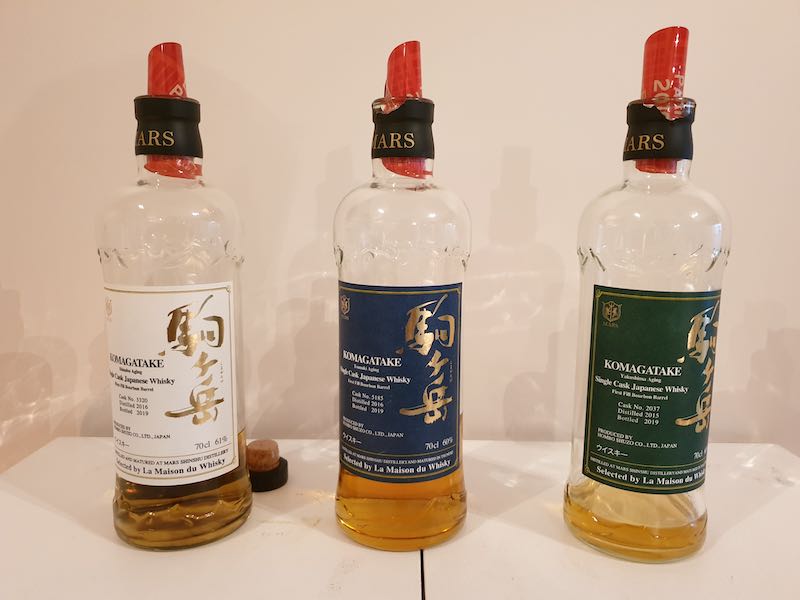
The line up was –
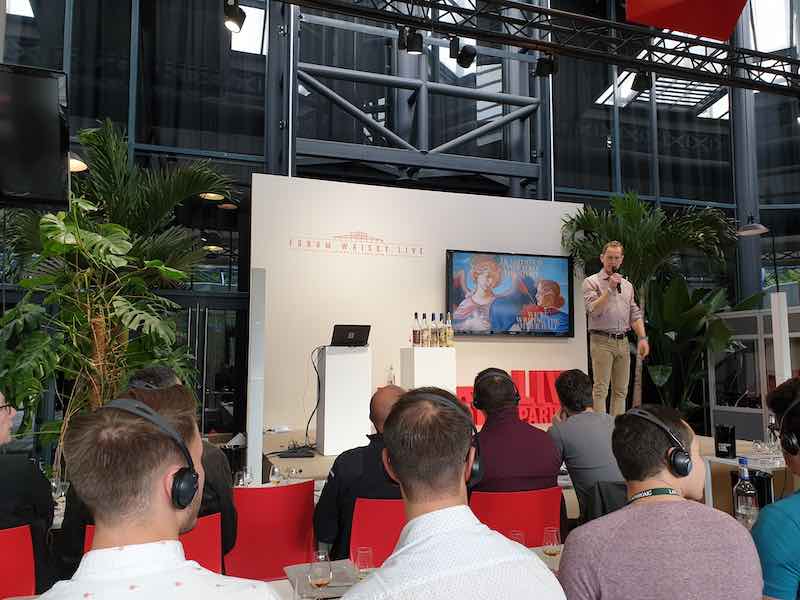
John Glaser, the founder of Compass Box, raised a few eyebrows when he founded the company. His determination in detailing all the whiskies and ages that went into each of his blends is at the heart of an increasing drive for transparency in the whisky industry today. Interestingly, this drive is also supported by Bruichladdich Distillery on Islay. John talked about each whisky in detail, explaining the recipe for each blend and stating the exact ages with the type of casks used.
The line-up consisted –
The tasting started with the first-ever Compass Box creation – Hedonism – which not only provided nostalgic value but was a fantastic blend to boot. The lineup culminated in the Myths and Legends 2 and 3 which were driven by a robust Glen Elgin distillate, giving lovely rhubarb and Turkish delight notes. The Affinity is supposedly the first-ever calvados and whisky blend, making for an enjoyable last dram.

Group Photo with John Glaser
We had a fantastic experience at Whisky Live Paris 2019 and would return. The draw was the opportunity to meet fellow whisky lovers from all over the world and share our opinions over fantastic whiskies. The views of the whiskies were formulated based on what the writer and his companions felt were the most exciting and impactful. Writing detailed tasting notes was not practical, given the short amount of time. We also tasted 30-40 whiskies in 1 day (possibly more), hence we will not blame anyone for questioning our sanity and palate conditions and consequently, our top picks for the show. Whisky is subjective, after all.
Finally, WhiskyGeeks would like to thank La Maison du Whisky Paris for our invitation to Whisky Live Paris’ trade day. It included an entire day’s access to all areas, including the VIP section. Thank you for the great opportunity!
*Read Part 1 of Whisky Live Paris here.
11311 Harry Hines Blvd
Dallas, TX, United States
(555) 389 976
dallas@enfold-restaurant.com
